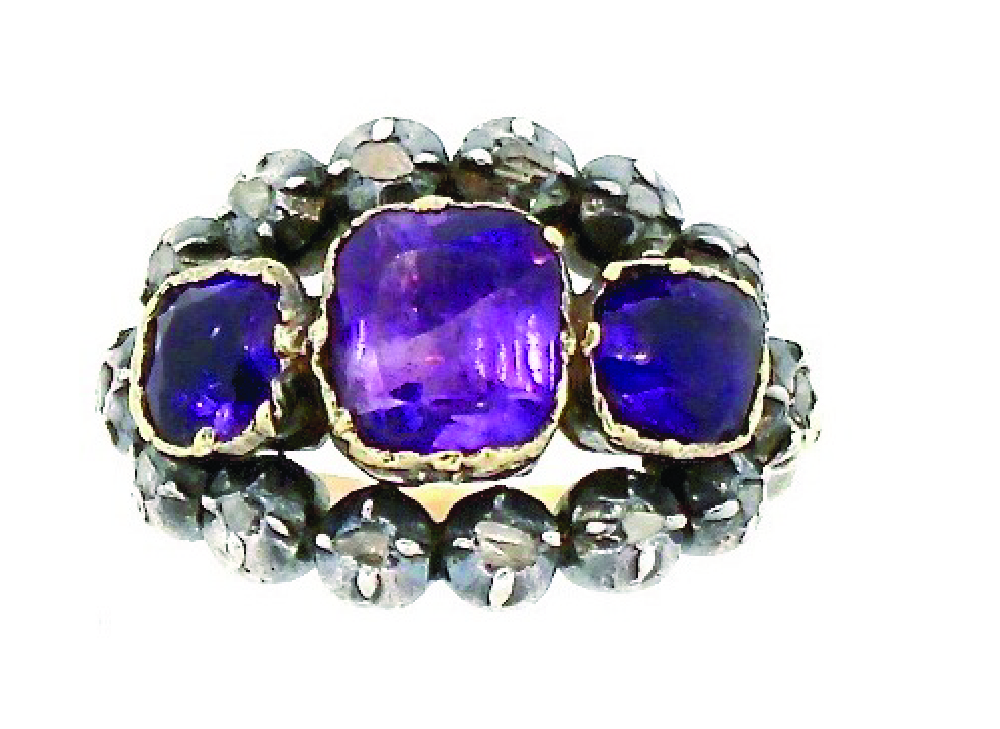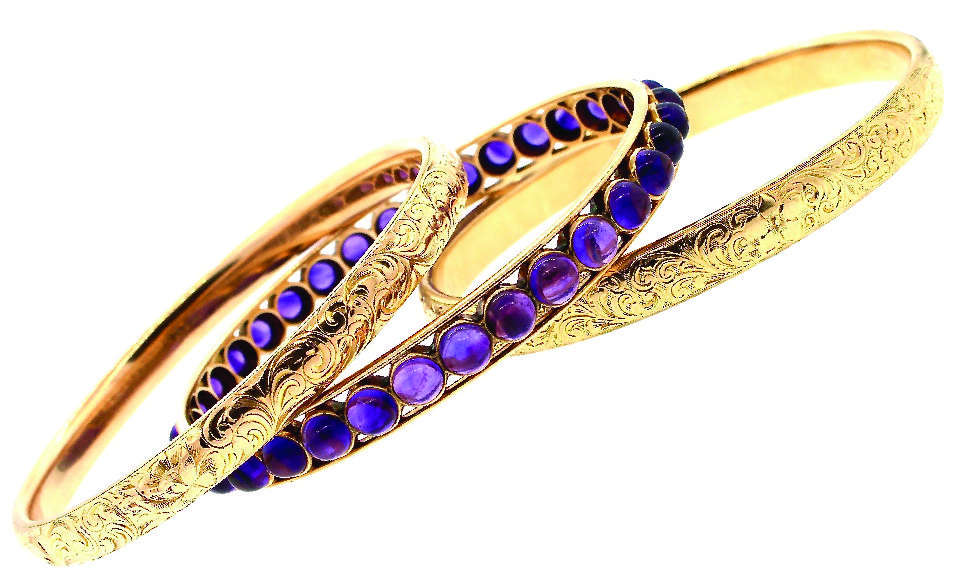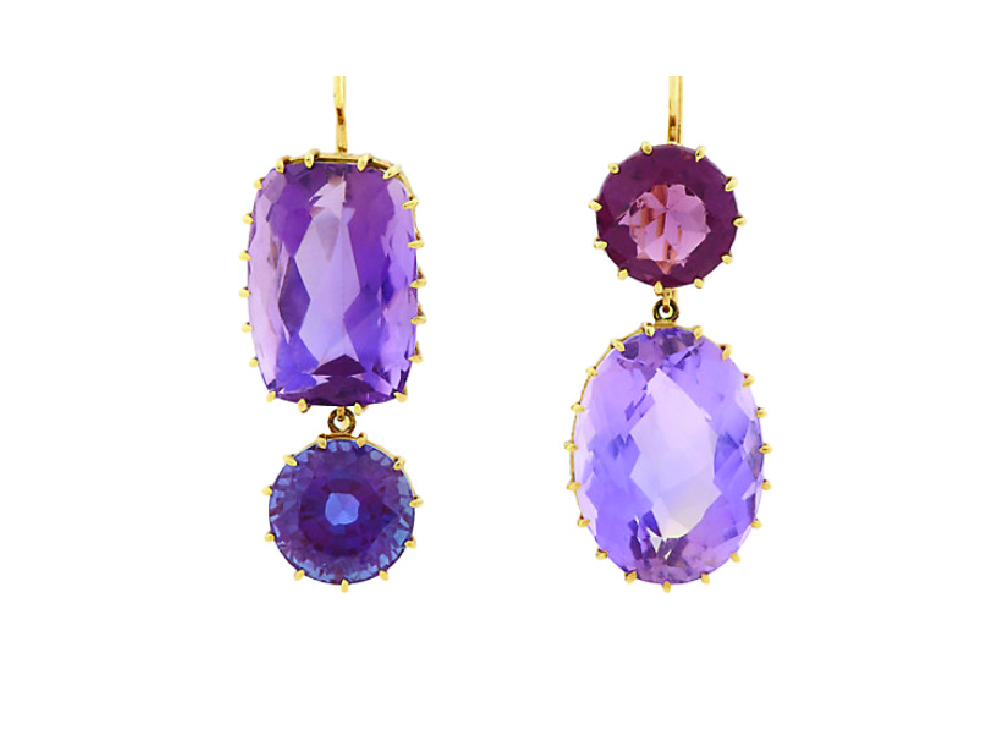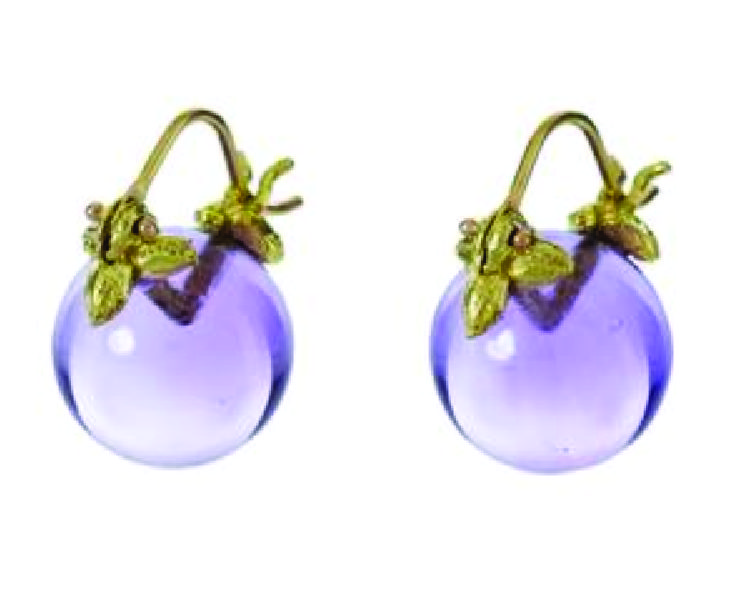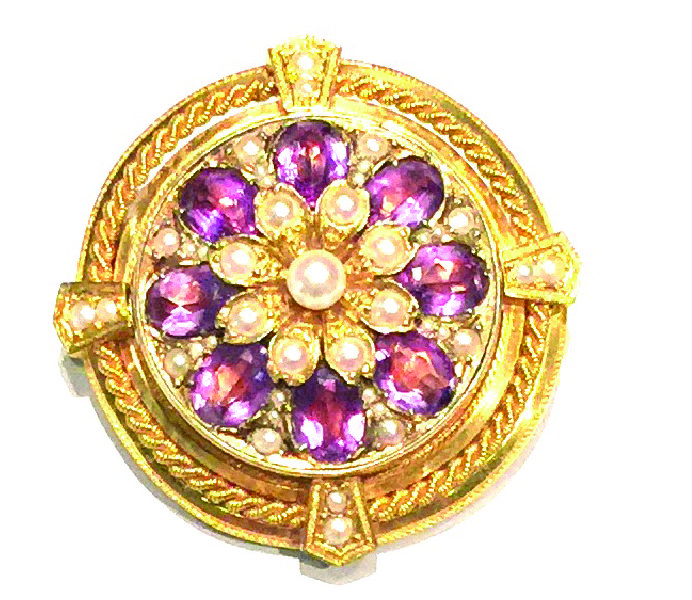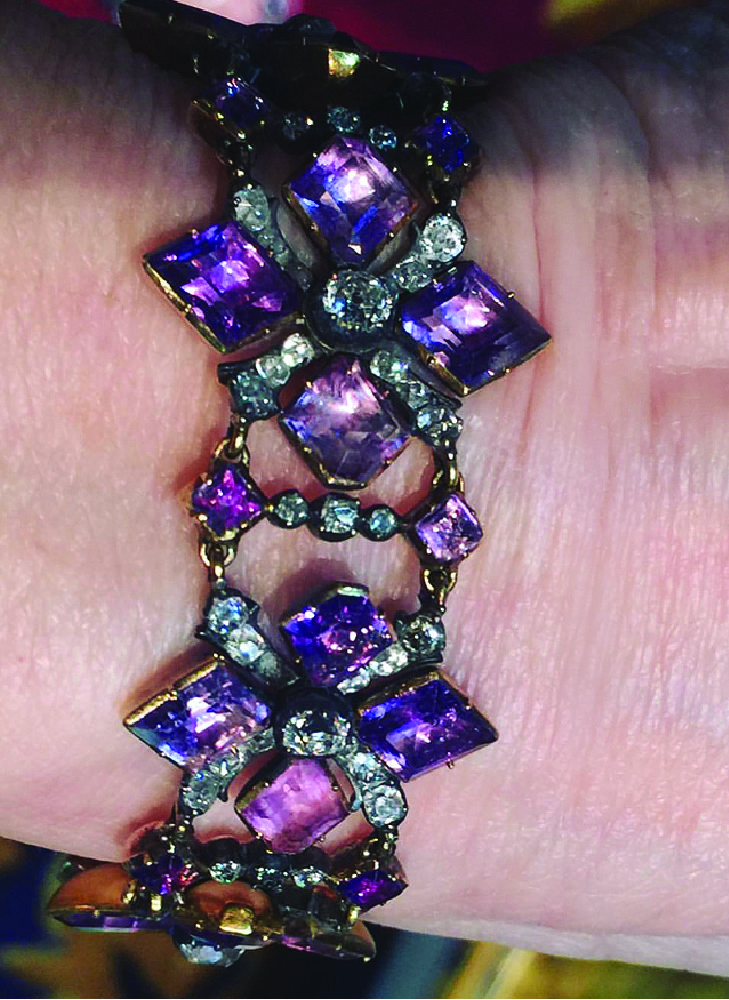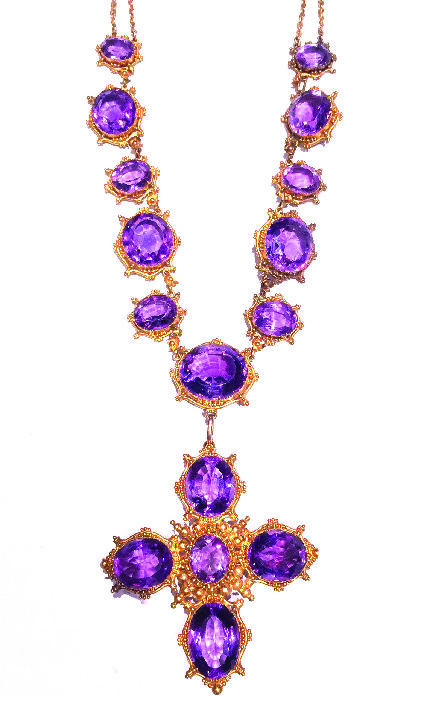Amorous for Amethyst
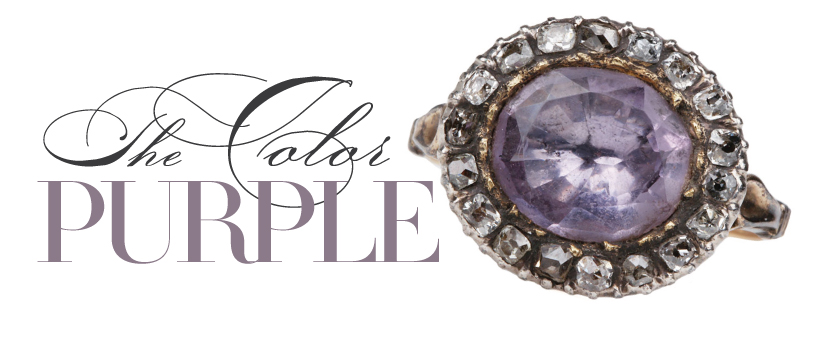
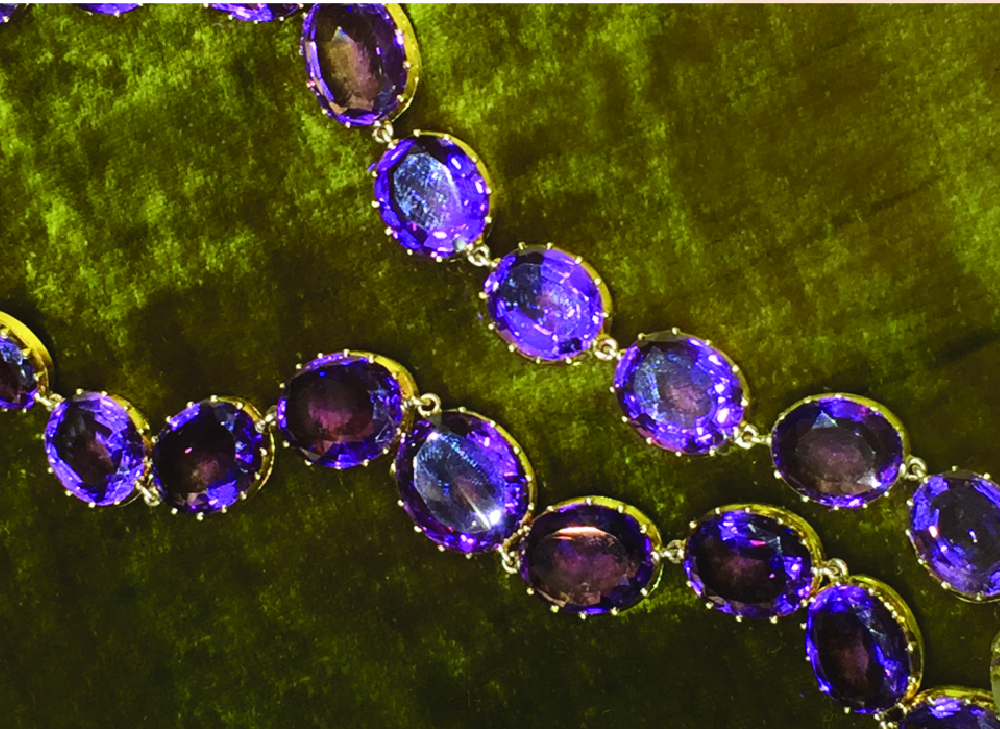
A Georgian amethyst rivière from Spicer-Warin
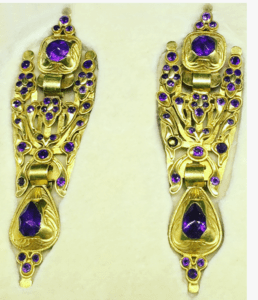
Amethys set Iberian Earrings at Spicer-Warin
Amethyst with its royal, spiritual/healing and counter-culture references returns as the must-have gemstone. Move over rose quartz, Pantone’s 2016 color of the year, and make room for all of amethyst’s permutations of purple. With its rich history, the stone is getting its fair share of attention in the studios of contemporary designers who rock big, gutsy gemstones as well as the shops and spaces of antique dealers who specialize in 200-year-old period pieces. In addition, due to its healing and curative properties, it has become the latest in a long line of gem-infused beauty products.
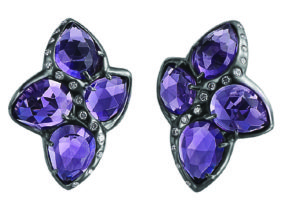
Amethyst Earrings by Alberian & Aulde
For many seasons, jewelry’s overall mood has been blue with turquoise, moonstone, lapis and boulder opals continuing to be the most popular stones crossing the modern and antique markets. Although these gems still remain strong, designers and dealers are in more of a ‘purple haze’ these days.
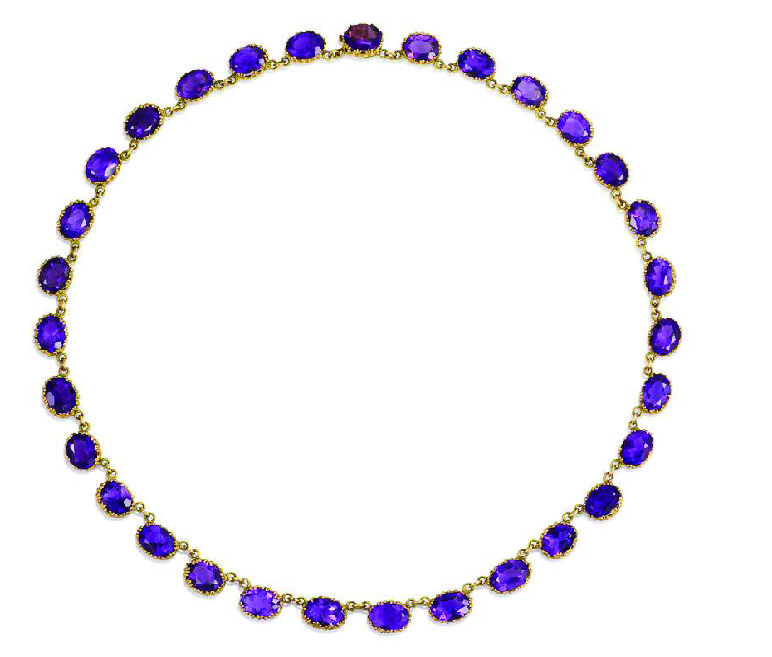
Amethyst Rivière at Kentshire
At an antiques show in July, I saw at least four dealers who specialize in Georgian and early Victorian jewelry with rare finds at somewhat prohibitive prices—due to the difficulty in find these pieces intact and in good condition. These include Georgian and diamond rivières, foil-backed rings, noble looking crosses and wide bracelets adorned with intricate gold work such as cannetille and tiny granulation.
- Georgian Amethyst and Rose Diamond Ring at Keyamour
- Victorian Gold and Amethyst Bangles at Keyamour
Designers such as Emily Satloff, whom I interviewed for the premiere issue of Bejeweled, bridges the gap between old and new with her modern and elegant takes on the technique of foil-backed gemstones. Her amethyst rivieres and earrings are lively and dance with the light.
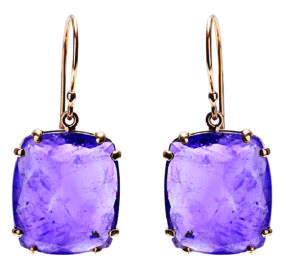
Amethyst Earrings by Jamie Joseph
On the other end of the spectrum, Jamie Joseph, whose husband Jeremy cuts myriad shapes of gemstones, showed me a tray filled with amethyst-slice necklaces, pear-shape rose cuts in cut-down settings for smaller necklaces and earrings mixed with opaque purple chalcedony in longer pendants. It had me do a double-take before I could take a shot of it. Margery Hirschey, who tends to combine her colors, also showed varying cuts and transparent and opaque amethysts in one display.
“It’s the best of both worlds,” Hirschey says, when we talk about the interest in amethyst and how it crosses over into both antique and contemporary jewelry, either with a regal feeling or with a boho chic. Unlike ancient times, when it was the stone of nobility and was equal in price to diamonds, emeralds, sapphires and rubies, amethysts are quite affordable and range from pale lavender to rich violet hues.
The imperial color purple was worn by the rulers of the Byzantine and Holy Roman Empires; thus amethyst became associated with Ecclesiastical jewels and European aristocracy, adorning the fingers of bishops as well as the coronation regalia of British royalty.The 19th century discovery of a large deposit of amethyst in Brazil lowered the cost, allowing large amethysts to be set more frequently into jewelry throughout the 20th century.
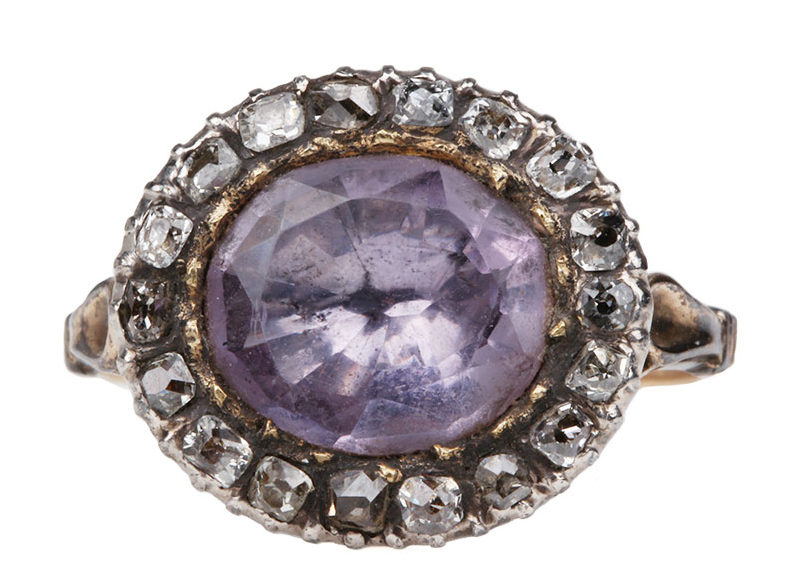
Georgian Amethyst and Rose Diamond RIng at Bell & Bird
When we talk about the spiritual quality of amethysts, we go back to Greek legends that associated amethyst with Bacchus, the god of wine, which the color of amethyst resembled. It was believe that wearing amethyst prevented drunkenness—this branched out into a broader meaning of clear-headed and quick-witted thinking in battle and in business affairs. Often seen as a stone of peace and calming, it was thought to soothe nightmares.
From the 20th century until present times amethyst is thought to calm the mind and keep it clear and centered while opening to spiritual direction. Amethyst stimulates the Crown Chakra to open and promotes intuition, wisdom and greater understanding of oneself and others. It became one of the three big stones for cocktail rings in the ‘40s and ‘50s, along with aquamarine and citrine.
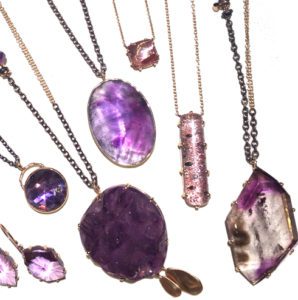
Various Amethyst pendants by Jamie Joseph
While the use of crystals for healing has persisted from ancient through modern times, it hit a high note during the psychedelic ‘60s and freethinking ‘70s. Amethyst was not only part of the culture, worn in the rough as amulets on leather cording, but it was used once again for its curative powers.
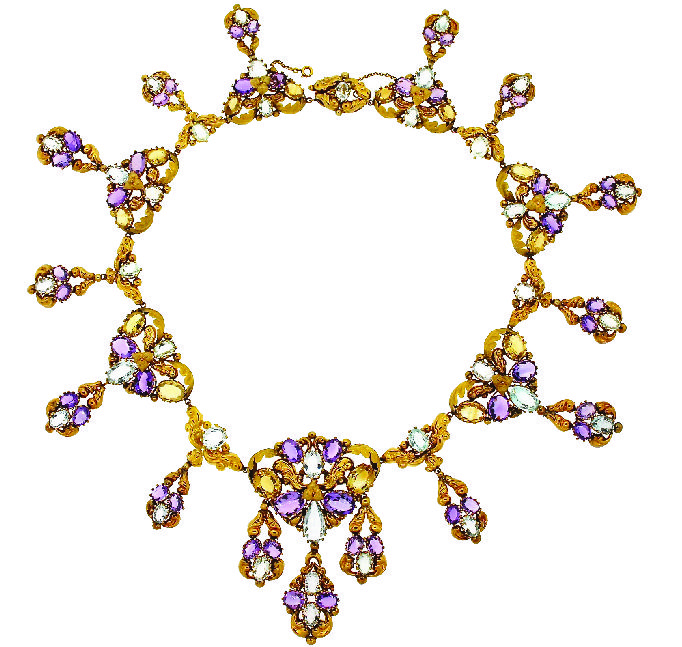
Georgian Necklace with Amethyst and Citrine at Keyamour
My personal favorite symbolism pertaining to amethyst is that it became the stone of St. Valentine and of faithful lovers, due to the legend that St. Valentine was thought to have worn an amethyst ring engraved with the image of Cupid. It is also February’s birthstone.
- Renee Lewis Amethyst Earrings
- Gabrielle Sanchez Amethyst Earrings
I might actually try one of the therapeutic or beauty applications, but I’d prefer to wear a riviere or a ring from the 18th century, taking in the essence of the jewels. Would they not provide the same effect? Just in case, I might just try both, and for my love life, have an intaglio created in amethyst with cupid and his bow and arrow facing the vein that goes straight to my heart.
- Antique Amethyst Brooch at Lenore Dailey
- Antique Amethyst Bracelet at Spicer-Warin
- Antique Amethyst Necklace at Lenore Dailey

